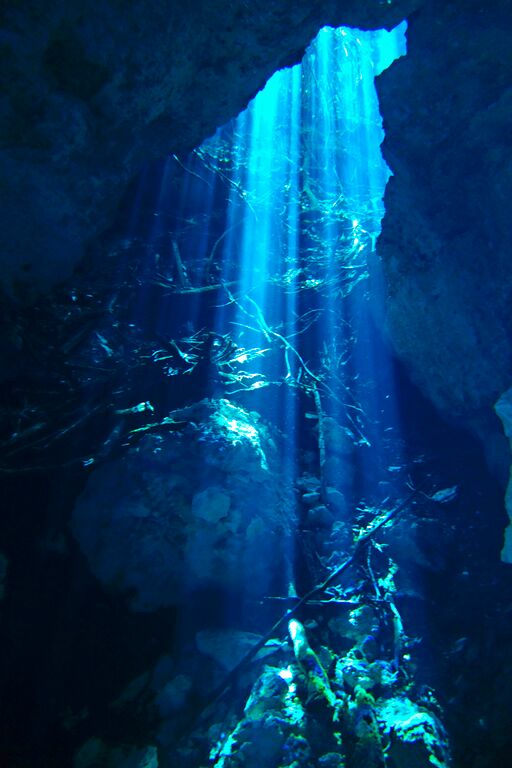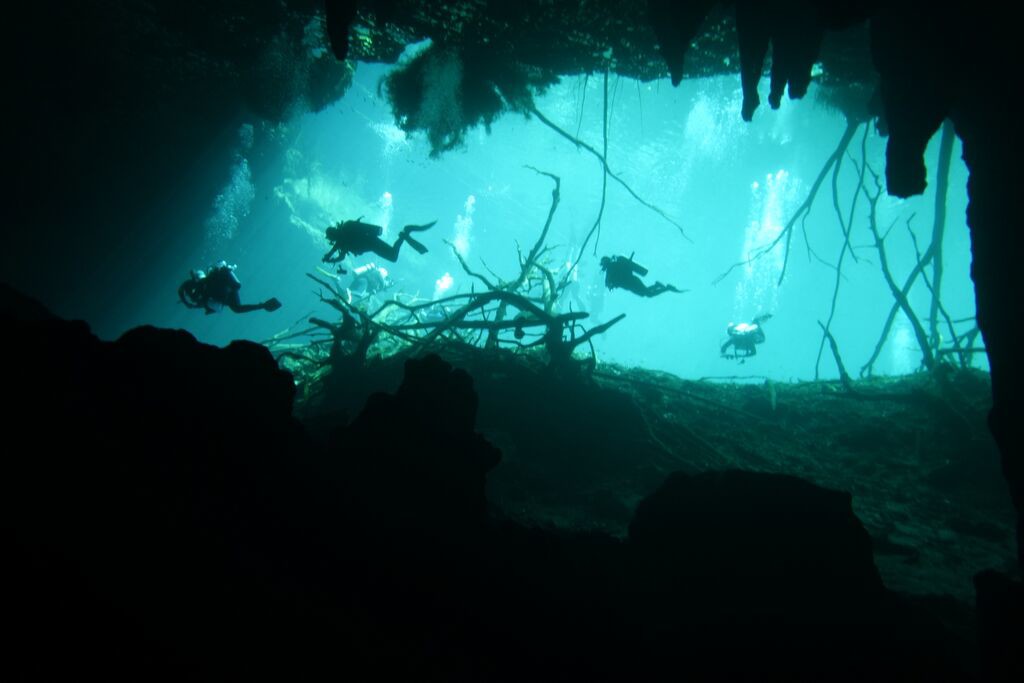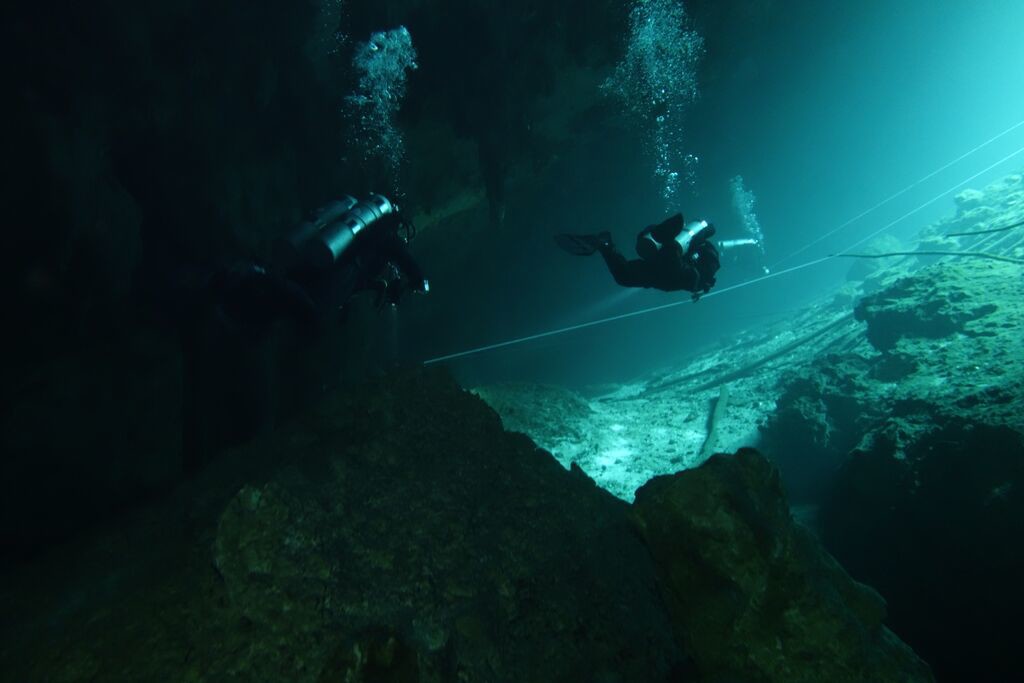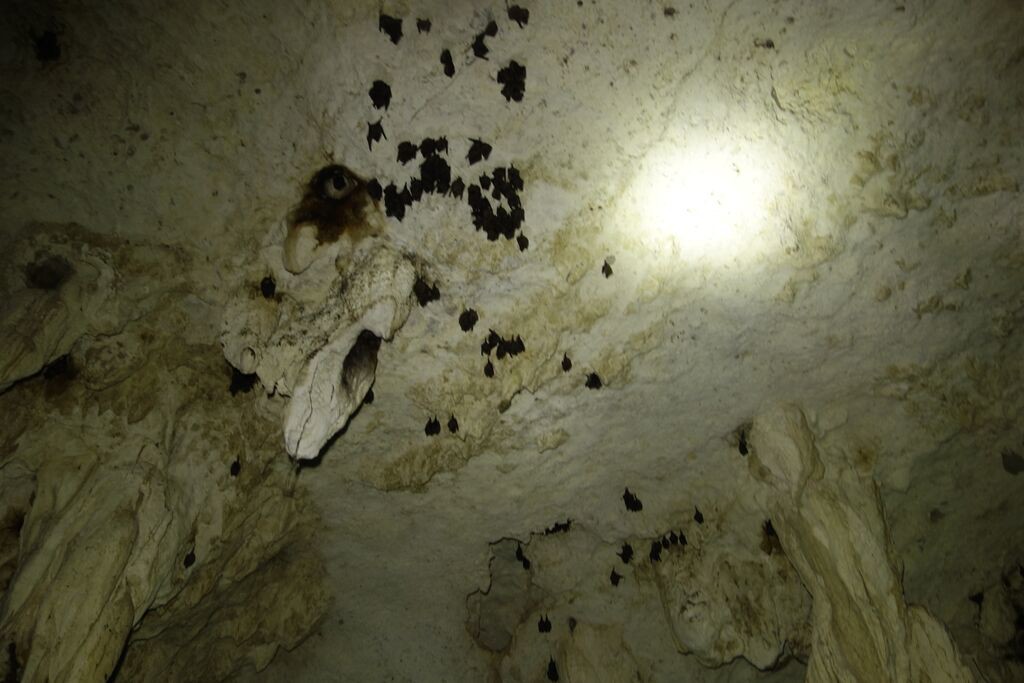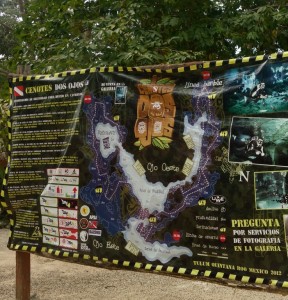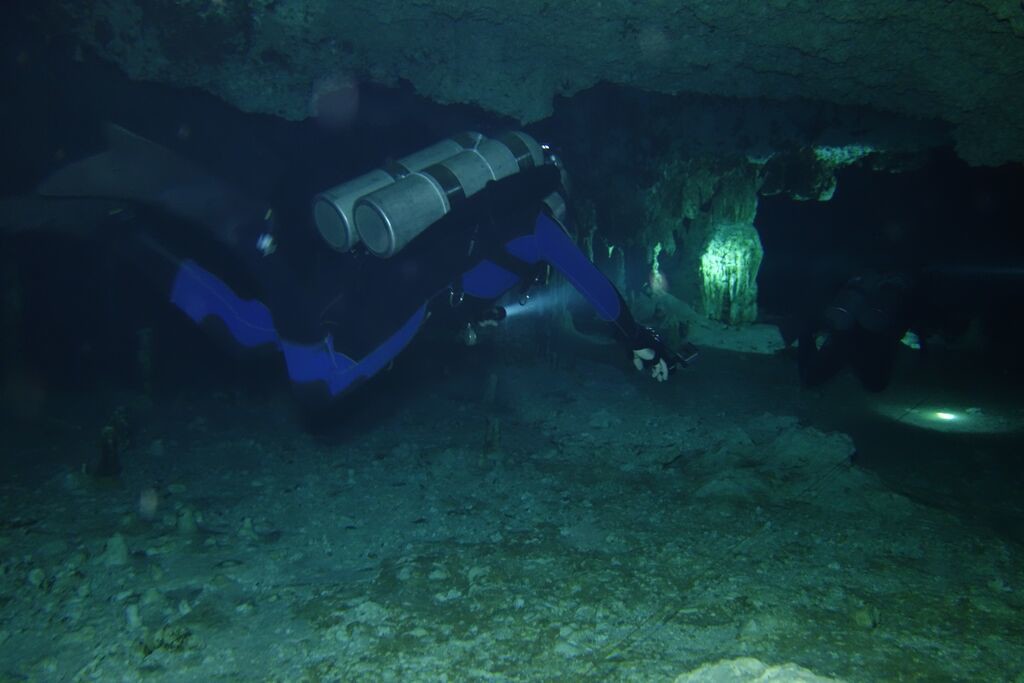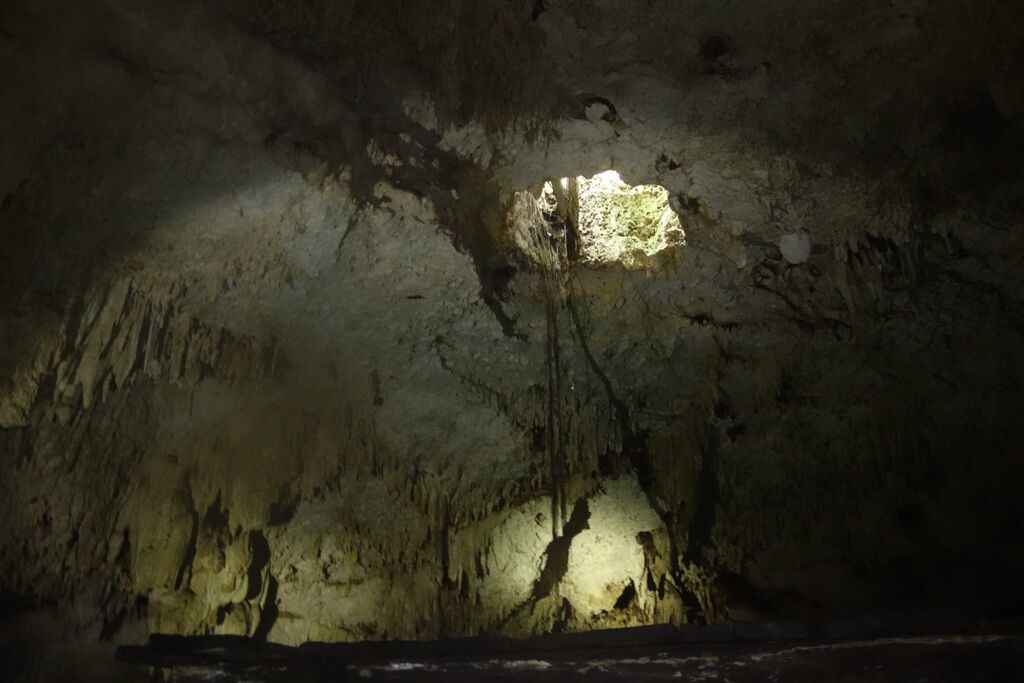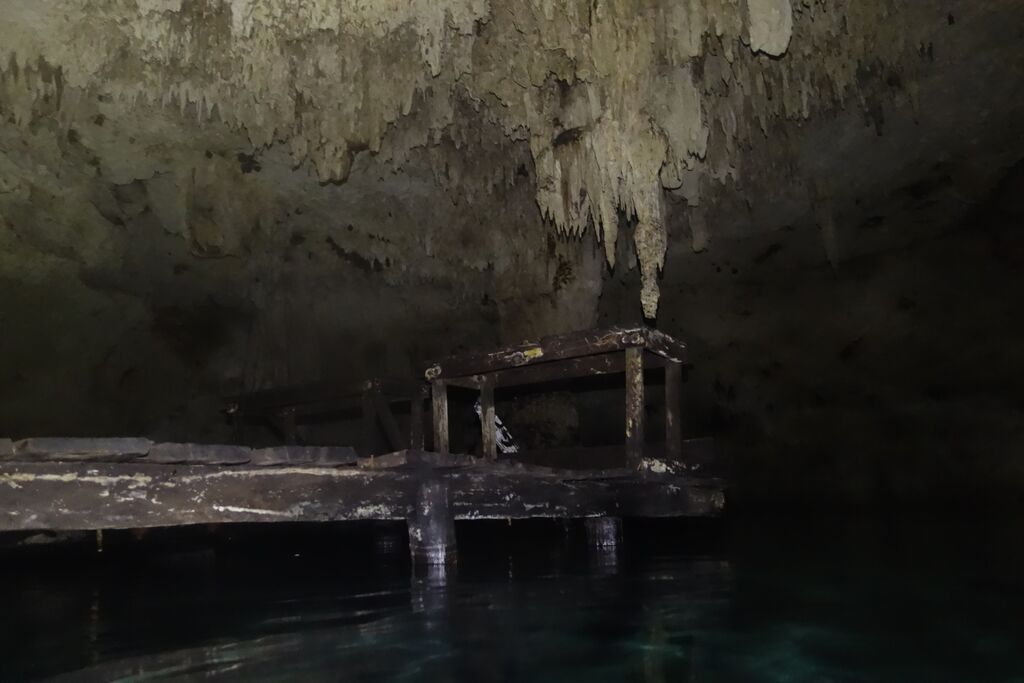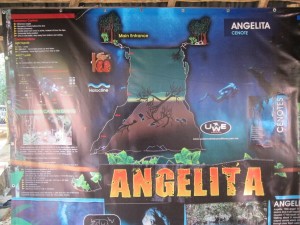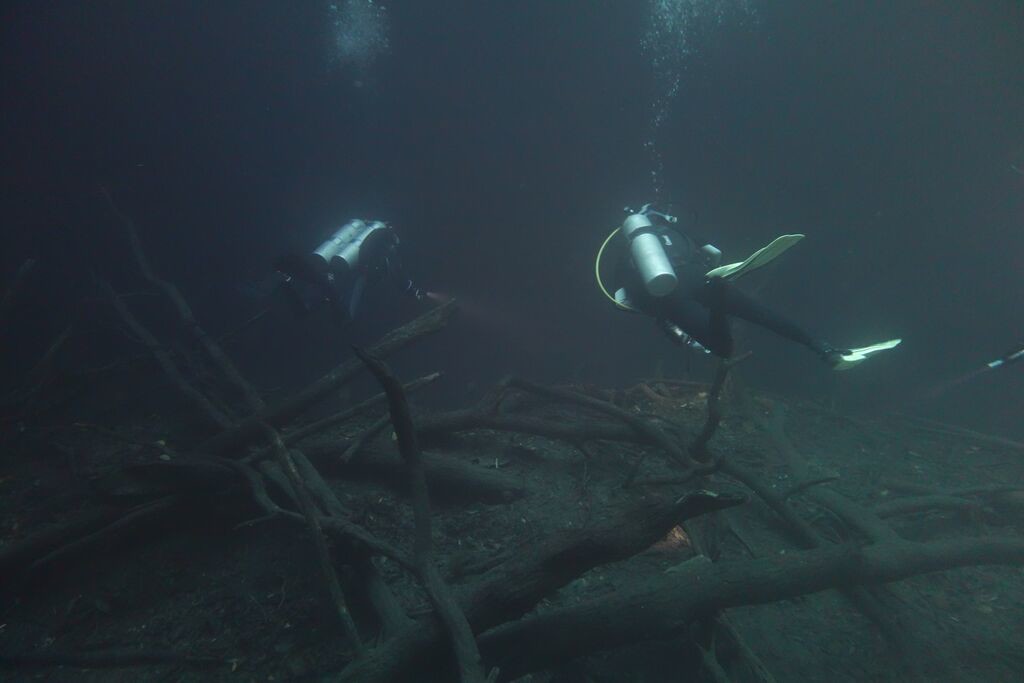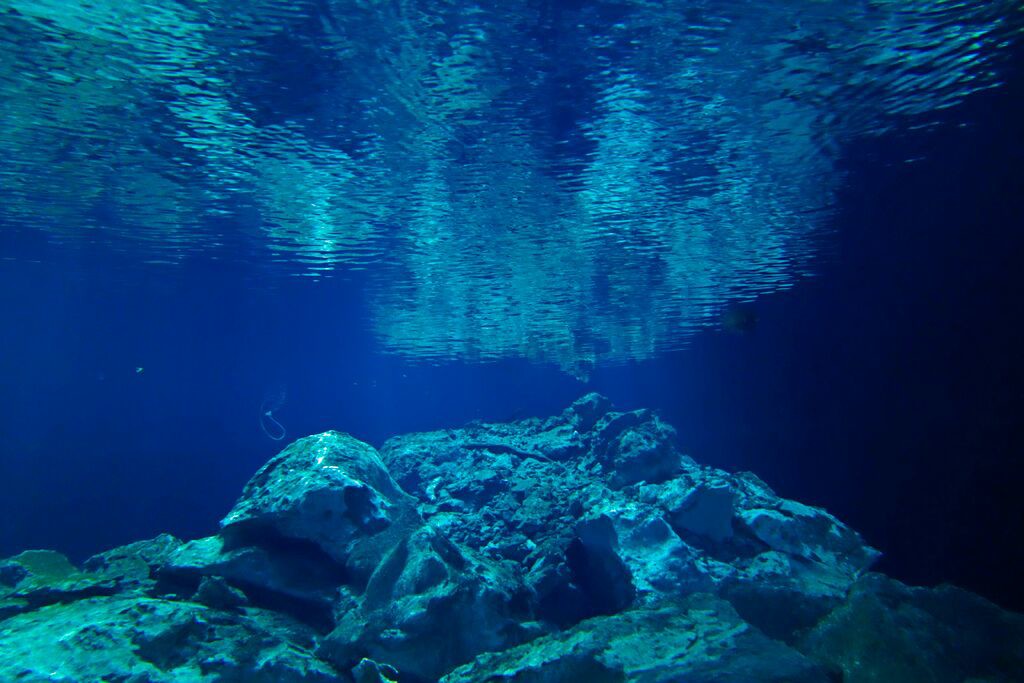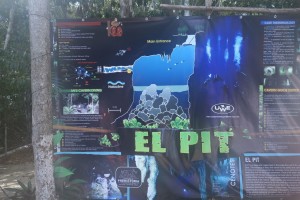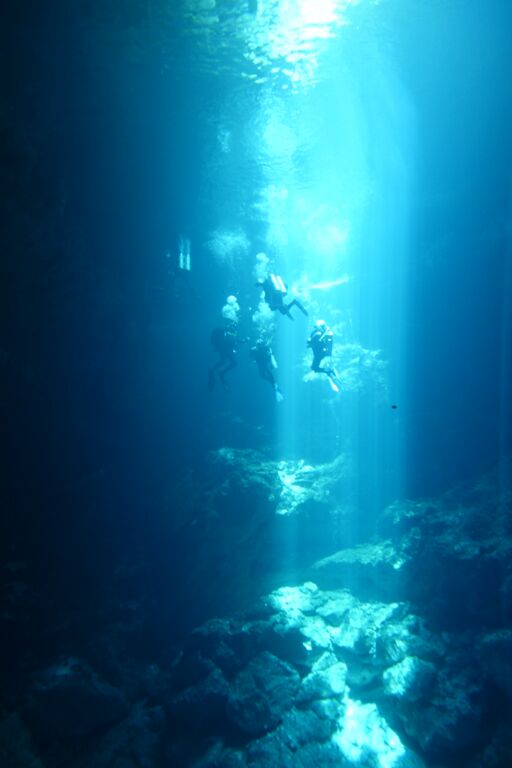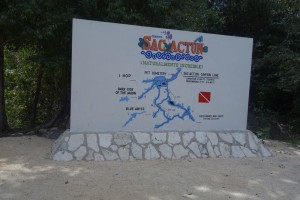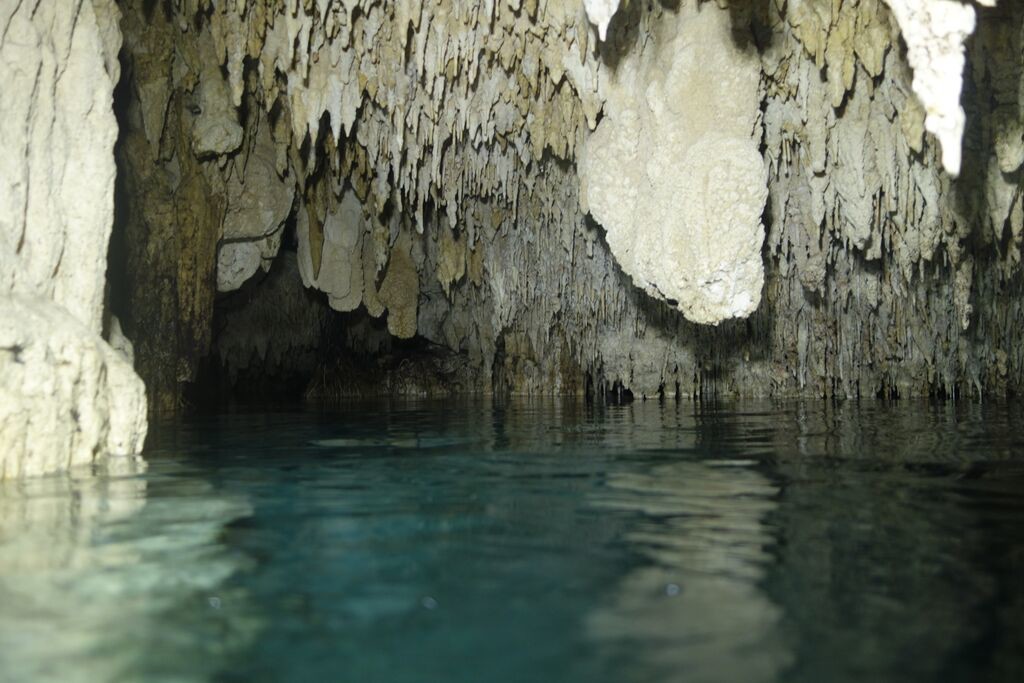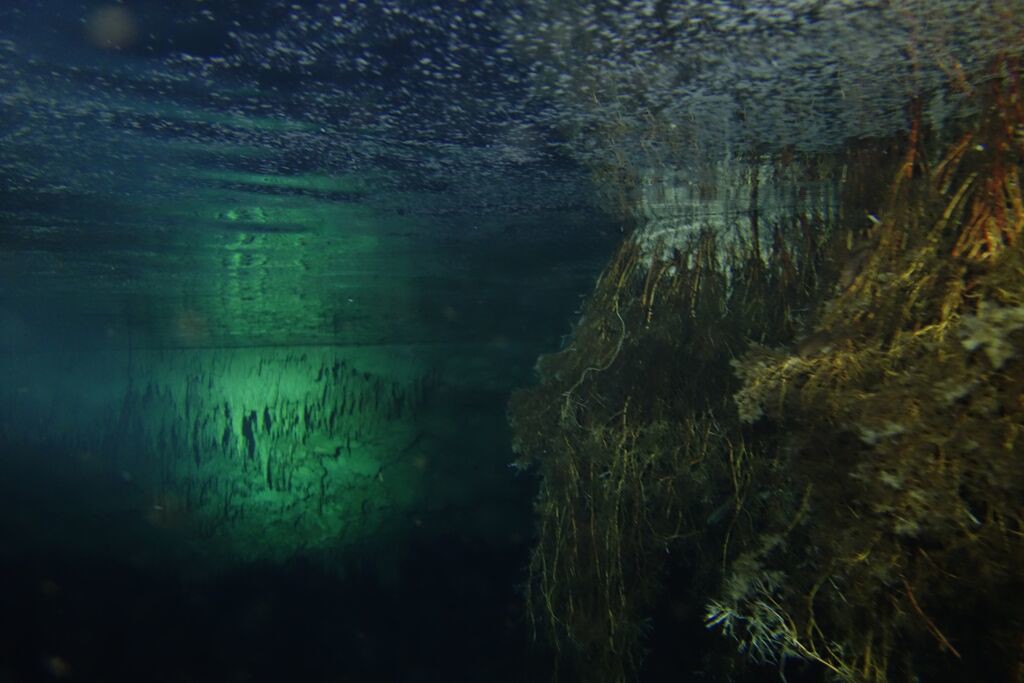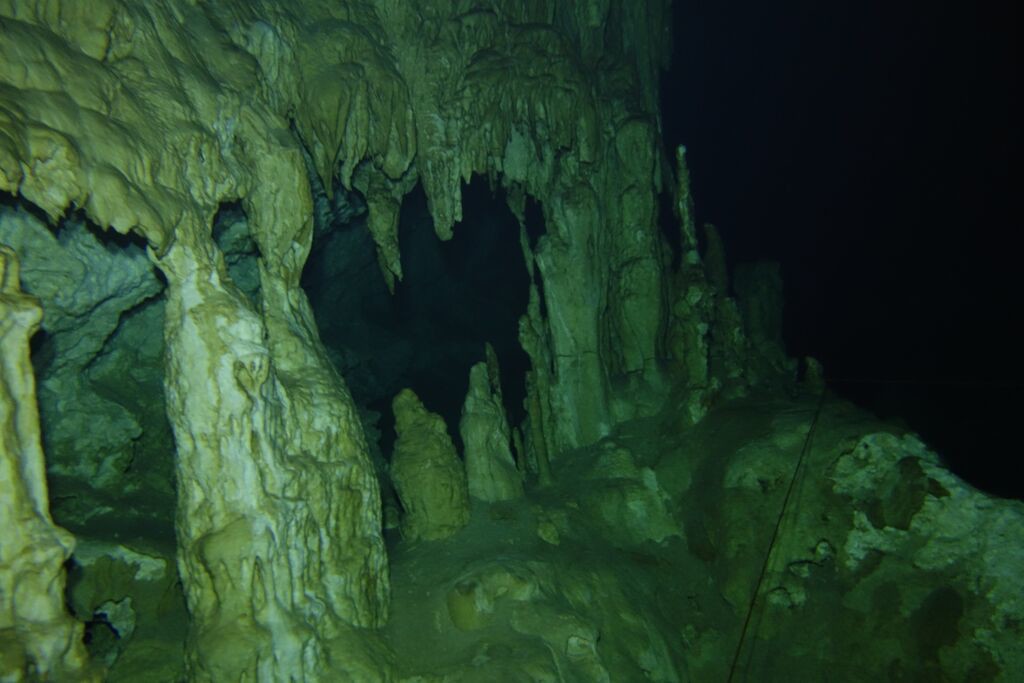News
Mayan Magic: Cavern Diving in Mexico’s Yucatan Peninsula
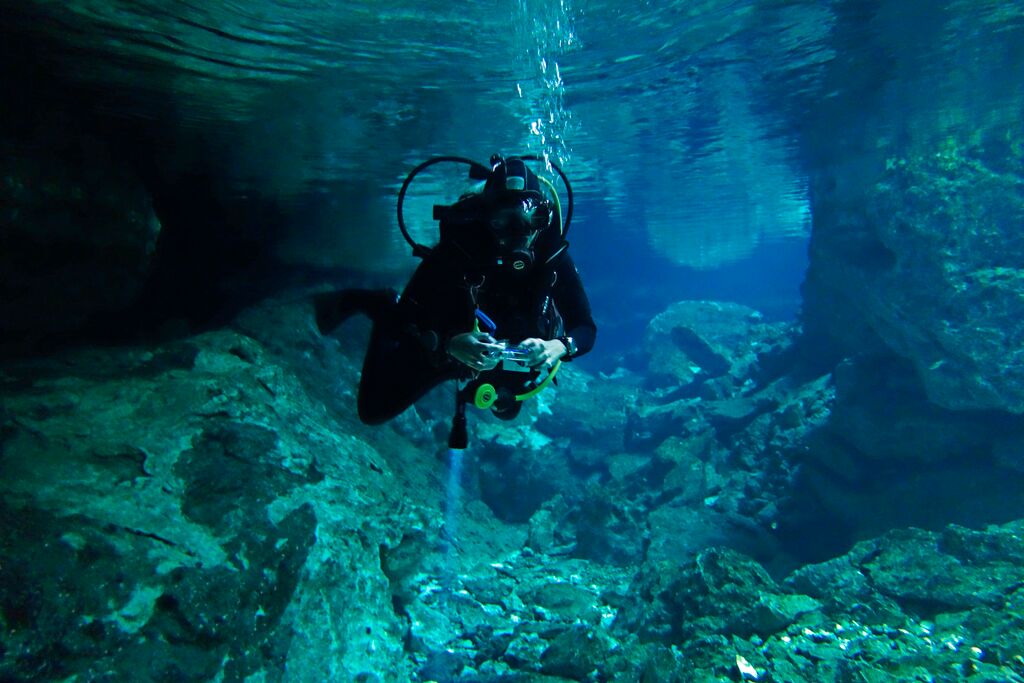
Southern Mexico’s Yucatan peninsula is the ancestral home of the Maya people whose ancient cities and monolithic temples can be found everywhere from Cancun in the North to Honduras 800 miles to the South.
The region consists of a gigantic limestone cap riddled with hundreds of subterranean rivers which over the millennia have carved out beautiful caves and passages on their way to the sea.
Over time some cave roofs have collapsed revealing open bodies of water called Cenotes which the Maya believed were gateways to the underworld and the home of their Gods.
Today they allow adventurous divers access to a magical flooded world where they can marvel at intricate limestone formations and dazzling light shows.
In February 2015 a group of fourteen current and former members of Southsea SAC (BSAC 009) set off to discover what makes the caverns of the Yucatan such a special place to dive.
As we were all experienced divers, our aim was to enjoy a “Rolls –Royce” tour of the area’s subterranean dive sites under the expert guidance of professional cave guides Lanny and Claire Vogel of Underworld Tulum, packing in as much diversity, quality and adventure as possible.
Day 1: Car Wash & Gran Cenote
Feeling our way
Having been met by Lanny and Budgie (yes, the same Budgie who skippered Top Gun out of Portland back in the day) we drove to Underworld Tulum’s base to be briefed on cavern diving protocols, divided into teams and acquainted with our cavern diving kit.
I was part of “Team Claire” led by cave diving expert Claire Vogel.
Our first Cenote dive would be at “The Car Wash”, so called because local taxi drivers used to wash their vehicles in the cenote’s clean, fresh water.
Being Cavern diving novices we began with a check out dive in a relatively open and unbreakable training area within the site, where we could safely practice basic cavern diving techniques and hone our trim and buoyancy skills before venturing underground.
Exercises successfully completed, an excited if slightly nervous “Team Claire” began its descent into the Cenote’s gaping maw to reach its hidden caverns.
Once inside the cavern system however, all apprehension vanished as we entered a magical realm straight out of Lord of the Rings and marvelled at the spectacular formations dripping water had created during the centuries these caves had been “dry”.
After 15 minutes underground we reached our turn around point and it was time to return to the light and the world of man.
With the opening dive successfully completed we re-loaded the trucks and headed to our next site, Gran Cenote.
This dive provided more opportunities to refine our Cavern diving skills as the route was a bit longer, with slightly narrower passages and less natural light, though we did plan to surface in a large air dome complete with resident bat population to check we were all happy before continuing on.
After spending time watching the bats scoot about in the torch light, it was time to push on and complete our dive as another team came in to enjoy the show.
Day 2: Dos Ojos
Good buoyancy required
The Dos Ojos site consists of two flooded tunnels which meet in a Cenote to form an underwater letter “Y”. When entering the system, the left passage takes you to “Bat Cave” whilst the right goes to the “Barbie Line”.
For our first dive, Claire led us into the right hand passage and onto the “Barbie Line” before continuing around the line’s circular route back to the entrance. As the line twisted its way through the cavern past spectacular rock formations, sometimes there was less than 3m of water between the roof and the fine powdery sand below making BSAC gold standard buoyancy essential to avoid dangerous silt outs.
On our second dive, we followed the left hand line into the Bat Cave cavern where conditions were even more challenging with only an average depth of 3.3m to play with. After finning through dimly lit passages for what seemed like an eternity, we emerged into a large domed cave with a small opening in the roof through which the sunshine streamed.
Under the hole was a large diving platform rising from the water on stilts. This had been built as a dive base by the early cave explorers who’d lower themselves and their kit into the cave using ropes dropped through the hole in the cave roof; real Indiana Jones stuff!
Day 3: Angelita and Tajma-Ha
Two signature sites
Angelita Cenote had long been on our cenote “bucket list” as not only is the site located in a beautiful setting, it’s also technically very demanding. Shaped like a tooth, the “crown” forms a large open water area whilst the “roots” slope down either side of a central mound to well over 50m.
An unusual feature of this site is the thick green layer of Hydrogen Sulfide-rich water permanently trapped between the fresh water above and the salt water below.
From above the layer looks like solid ground, from which the skeletal remains of trees submerged hundreds if not thousands of years ago emerge as if through a green mist.
Descending through the Sulfide layer to the dark waters beneath, we gazed at the drowned trees before returning to the light and making our way slowly back to the surface.
In the early days of cavern exploration, divers flying over the dense jungle looking for open water would drop streamers into the trees to mark any promising sites before walking in with all their gear to explore whatever they had found. Tajma-Ha was one of the many spectacular sites discovered in this way.
Billed as one of the most beautiful cavern systems in the area, our dive would take us on a circular route past two different Cenotes before returning us to the entrance/exit point.
We followed the guide line clockwise, skirting the Puntos de Luz air dome before moving onto the beautiful Sugar Bowl Cenote.
There we paused for a moment’s reflection on the sights we had seen before continuing on and back to our start point through more spectacular rock formations.
Day 4: The Pit & Pet Cemetery
The longest cave system in the world
Located 6 miles from the nearest tarmac road in what was once dense jungle, The Pit was accidently discovered in 1985 by the Mexican Army who were conducting an aerial assessment of damage caused to the area by Hurricane Elena. Now known to be connected to the Dos Ojos system, it forms part of the third longest underwater cave system in the world (52 miles).
The site itself looks like a goatskin water bottle. A relatively narrow entrance leads divers into a large flooded cavern whose rock strewn floor lies some 40m below.
Staying close to the remaining cavern roof the route initially meandered its way around a large undercut passing beautiful stalagmites before spiralling downwards towards the bottom. At 28m there’s a white Hydrogen Sulfide layer through which a rubble hill protrudes like an underwater island. Approaching the end of our allotted bottom time we began our ascent, riding the shafts of sunlight as they slowly carried us up to the surface.
Pet Cemetery, despite its rather macabre name, was one of the best sites we dived all trip.
Part of the longest system of underwater caves on earth (207 miles), we would dive the Sac Actun (Mystic River) cavern line route.
Running for 750 meters at an average depth of 4m, this dive was the longest and most technically demanding we had so far attempted.
Entering the system at roughly the line’s mid-point, we followed it in a loop, thoroughly enjoying the amazing rock formations and visiting a spectacular air dome before returning home.
Day 5: Dream Gate
An amazing two for one
Located two miles from the Dos Ojos system, Dream Gate has an upstream and a downstream circuit providing divers with two great dives at one amazing location.
We split into two teams to tackle the upstream line travelling in opposite directions to minimise traffic through the narrower parts of the route.
The average depth was around 4m with the line skirting rows of limestone columns lined up like the bars of an old fashioned jail.
After about 15 minutes we surfaced in a small air dome, home to a colony of rare Mini Bats indigenous to this region. This was a very strange place. Vines climbed the cave’s stone columns towards the light creating an underground forest in which limestone pillars took the place of trees.
Our second dive was in the downstream cavern. Here there were many more columns, stalactites and stalagmites to navigate around than in the upstream section.
Sometimes the columns were so tightly packed they formed lattice like screens providing tantalising glimpses of potentially unexplored routes to tempt the unwary explorer from the true path.
Is this for you?
Diving Yucatan’s Cenotes is undoubtedly an amazing experience and definitely not one to be missed. Cavern diving presents divers with some extra challenges however; in particular they should be trained and practiced in the techniques commonly used when diving in dimly lit, overhead environments and be able to consistently deliver excellent buoyancy control throughout their dives. If that’s you though, go for it, you won’t regret it!
Essentials
When to go:
January to March is Yucatan’s least humid period with average daytime temperatures a balmy 25°C. In the caverns the water temperature averaged 24°C, so a full length 3-5mm wetsuit was perfect.
Getting there:
Probably the easiest place for most UK travellers to fly into is Cancun airport some 75 miles north of Tulum and the main Cenote areas. The transfer time is 1.5 – 2hrs by coach/private car on well paved roads.
Flights are from £650 return with Virgin, including a whopping 56kg luggage allowance.
Logistics:
Being a large group we contracted Underworld Tulum to source and deliver everything we required, from airport transfers to specialist diving equipment and guides. Their logistical expertise and “can do” attitude resulted in a totally hassle free trip, just what we wanted.
Diving Costs:
$150 USD per day which included a fully qualified cavern guide, all cavern diving equipment inc. twin sets, wings & regs (Single cylinders are also available if required), NITROX/Air fills, lunch (fruit, cake and soft drinks), hotel pick-ups, site fees and inter-site transportation.
Accommodation:
Underworld Tulum have six 2 bed S/c apartments for rent at their base near Tulum (prices from $80 USD per apt/per night). Should people want to make their own arrangements however, there’s plenty of accommodation around Tulum to suit all budgets.
Non-diving activities:
Many hotels organize mini-bus/coach tours with English speaking guides to nearby Mayan ruins (cost approx. $70 USD pp) and there are dedicated snorkeling areas at most Cenote sites.
Gear News
Scubapro Free Octopus Promotion 2024

Free Octopus with every purchase of a SCUBAPRO regulator system
Just in time for the spring season, divers can save money with the FREE OCTOPUS SPRING PROMOTION! Until July 31st SCUBAPRO offers an Octopus for free
with every purchase of a regulator system!
Get a free S270 OCTOPUS with purchase of these combinations:
MK25 EVO or MK19 EVO with A700
MK25 EVO or MK19 EVO with S620Ti
MK25 EVO or MK19 EVO with D420
MK25 EVO Din mit S620Ti-X
Get a free R105 OCTOPUS with purchase of the following combinations:
MK25 EVO or MK19 EVO with G260
MK25 EVO or MK17 EVO with S600
SCUBAPRO offers a 30-year first owner warranty on all regulators, with a revision period of two years or 100 dives. All SCUBAPRO regulators are of course certified according to the new European test standard EN250-2014.
Available at participating SCUBAPRO dealers. Promotion may not be available in all regions. Find an authorized SCUBAPRO Dealer at scubapro.com.
More information available on www.scubapro.com.
Blogs
Northern Red Sea Reefs and Wrecks Trip Report, Part 3: The Mighty Thistlegorm

Jake Davies boards Ghazala Explorer for an unforgettable Red Sea diving experience…
Overnight, the wind picked up, making the planned morning dive a bit bumpy on the Zodiacs to the drop point on Thomas Reef. There, we would dive along the reef before descending through the canyon and then passing under the arch before ascending the wall with a gentle drift. The site provided great encounters with more pelagic species, including shoals of large barracuda, tuna, and bigeye trevally.
Once back on the boat, it was time to get everything tied down again as we would head back south. This time, with the wind behind us, heading to Ras Mohammed to dive Jackfish Alley for another great gentle drift wall dive before then heading up the coast towards the Gulf of Suez to moor up at the wreck of the Thistlegorm. This being the highlight wreck dive of the trip and for many onboard, including myself, it was the first time diving this iconic wreck. I had heard so much about the wreck from friends, and globally, this is a must on any diver’s list. Fortunately for us, there was only one other boat at the site, which was a rarity. A great briefing was delivered by Ahmed, who provided a detailed background about the wreck’s history along with all the required safety information as the currents and visibility at the site can be variable.

Kitting up, there was a lot of excitement on deck before entering the water and heading down the shoreline. Descending to the wreck, there was a light northerly current which reduced the visibility, making it feel more like the conditions that can be found off the Welsh coast. At 10m from the bottom, the outline of the wreck appeared as we reached the area of the wreck which had been bombed, as our mooring line was attached to part of the propeller shaft. Arriving on deck, instantly everywhere you looked there were many of the supplies which the ship was carrying, including Bren Carrier tanks and projectiles that instantly stood out.

We headed around the exterior, taking a look at the large propeller and guns mounted on deck before entering the wreck on the port side to take a look in the holds. It was incredible to see all the trucks, Norton 16H, and BSA motorcycles still perfectly stacked within, providing a real snapshot in time.

Overall, we had four dives on the Thistlegorm, where for all of the dives we were the only group in the water, and at times, there were just three of us on the whole wreck, which made it even more special, especially knowing that most days the wreck has hundreds of divers. Along with the history of the wreck, there was plenty of marine life on the wreck and around, from big green turtles to batfish, along with shoals of mackerel being hunted by trevally. Some unforgettable dives.

The final leg of the trip saw us cross back over the Suez Canal to the Gobal Islands where we planned to stay the night and do three dives at the Dolphin House for the potential of sharing the dive with dolphins. The site, which included a channel that was teeming with reef fish, especially large numbers of goatfish that swam in large shoals along the edge of the reef. These were nice relaxing dives to end the week. Unfortunately, the dolphins didn’t show up, which was okay as like all marine life they are difficult to predict and you can’t guarantee what’s going to be seen. With the last dive complete, we headed back to port for the final night where it was time to clean all the kit and pack before the departure flight the next day.

The whole week from start to finish on Ghazala Explorer was amazing; the boat had all the facilities you need for a comfortable week aboard. The crew were always there to help throughout the day and the chefs providing top quality food which was required after every dive. The itinerary providing some of the best diving with a nice mixture of wreck and reef dives. I would recommend the trip to anyone, whether it’s your first Red Sea liveaboard in the Red Sea or you’re revisiting. Hopefully, it’s not too long before I head back to explore more of the Red Sea onboard Ghazala Explorer.

To find out more about the Northern Red Sea reef and wrecks itineraries aboard Ghazala Explorer, or to book, contact Scuba Travel now:
Email: dive@scubatravel.com
Tel: +44 (0)1483 411590
Photos: Jake Davies / Avalon.Red
-

 News3 months ago
News3 months agoHone your underwater photography skills with Alphamarine Photography at Red Sea Diving Safari in March
-

 News3 months ago
News3 months agoCapturing Critters in Lembeh Underwater Photography Workshop 2024: Event Roundup
-

 Marine Life & Conservation Blogs2 months ago
Marine Life & Conservation Blogs2 months agoCreature Feature: Swell Sharks
-

 Blogs2 months ago
Blogs2 months agoMurex Resorts: Passport to Paradise!
-

 Blogs2 months ago
Blogs2 months agoDiver Discovering Whale Skeletons Beneath Ice Judged World’s Best Underwater Photograph
-

 Gear Reviews3 months ago
Gear Reviews3 months agoGear Review: Oceanic+ Dive Housing for iPhone
-

 Marine Life & Conservation2 months ago
Marine Life & Conservation2 months agoSave the Manatee Club launches brand new webcams at Silver Springs State Park, Florida
-

 News3 months ago
News3 months agoWorld’s Best Underwater Photographers Unveil Breathtaking Images at World Shootout 2023


